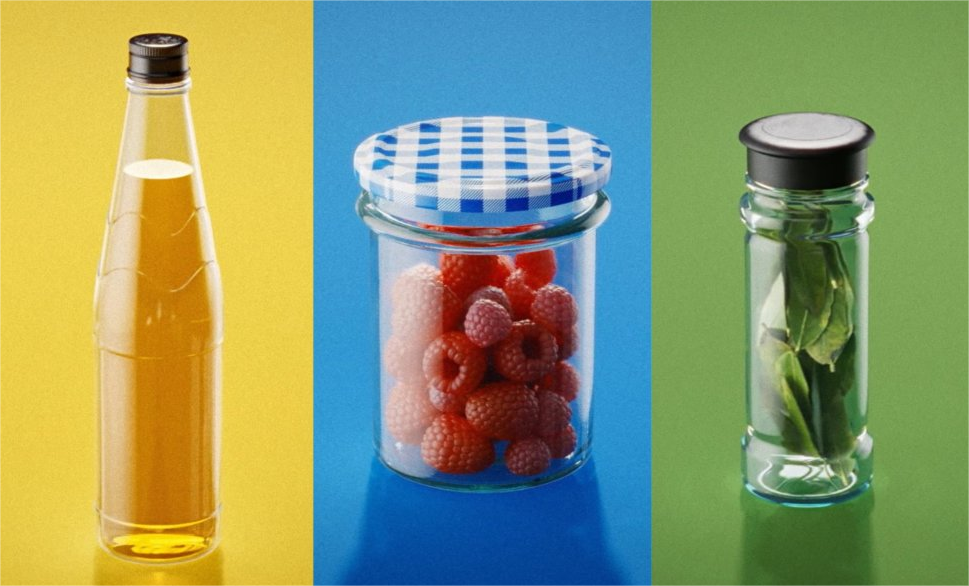Closures are an important part of any bottle or jar packaging. They serve the critical functions of sealing the contents and preventing leakage and contamination. For glass bottles and jars used to package foods, beverages, cosmetics and pharmaceuticals, the closure must create a tight seal while also being easy to open and reclose.
There are many types of closures used for glass bottles and jars, with different materials, designs and sealing mechanisms. The most common options include metal caps, plastic caps, natural and synthetic corks, glass stoppers, and more. Selecting the right closure depends on factors like contents, processing conditions, shelf life requirements and aesthetics.
In this article, we will provide an overview of the most popular closures used for glass bottles and jars. It covers the different types, materials, and considerations when selecting closures for various applications.
As one of the leading custom glass bottle manufacturer from China, MC Glass offer qualified glass containers together with suitable caps and lids.
Different Types of Closures
A wide array of closure options exist for glass bottles and jars, each with distinct sealing mechanisms, advantages and typical applications. This section surveys popular styles and their usage scenarios.
Glass stopper
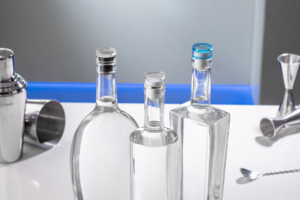
Glass stoppers are an elegant choice to seal decanters and high end drink bottles. They provide an excellent seal and have a classic, sophisticated look. Glass stoppers fit precisely into the bottle neck and some incorporate silicone or rubber gaskets to improve the seal. They need to be handled carefully to avoid breaking but make a nice display piece.
Wine corks
Natural cork wine stoppers are the traditional choice for sealing wine bottles. Cork allows slight oxygen exposure to age wine slowly. The compressible cork conforms to form a tight seal inside the bottle neck. Natural variability in corks means some allow more or less oxygen for unpredictable aging. Synthetic alternatives like plastic and agglomerated cork address consistency issues.
Cork stoppers
Cork closures are used for their look, compressibility to form tight seals, and sustainably renewable sourcing. In addition to wine, tapered cork options help seal food jars, flasks, decanters and decorative bottles. Cork allows gentle diffusion for semi-permeable sealing. Cork stoppers maintain tight seals during transportation while being easy to remove manually.
Guala closures
Guala closures are aluminum screw caps with a tamper-evident safety button for spirits and liquor. They provide excellent leakage protection and prevent refilling. Guala closures are the industry standard for premium spirits like whisky and vodka. The metal caps compress a gasket for a tight seal then snap off the safety button on first opening.
Crown caps
Crown seals are the ubiquitous closures on top of beer and soda bottles. The metal cap wraps over the lip of the bottle neck and compresses a plastic liner against the glass rim to seal the contents. The crimped edges and pressure hold the liner in place. Crown caps provide excellent security and tamper evidence while being very cost effective even for high volume beverages.
Swing tops
Swing top closures are the “flip-top” style caps on some artisanal beer, kombucha and soda bottles. A wire clamp wraps around the neck and flips up to open and down to close. Typically the stopper is rubber or plastic compressed against a ceramic, glass or metal rim. Swing tops provide a satisfying manual opening and closing while creating a leak-proof seal.
Screw caps
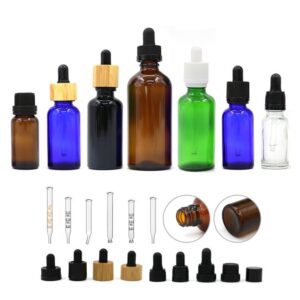
Screw caps form an excellent seal between the threaded plastic cap and a smooth glass bottle neck. Plastic screw caps often include a compressible liner that seals strongly against the glass rim when tightened. Screw caps provide outstanding shelf life for foods and beverages while being quick and easy to open and close. They are a ubiquitous choice for packaging vinegar, sauces and condiments.
Tin lids
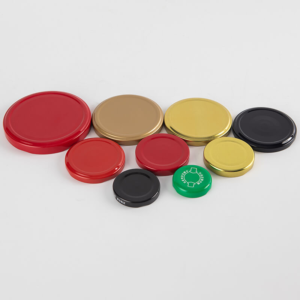
Traditional tin lids seal small jars of jams, jellies and preserves through an inert metal to metal seal between the lid and rim edges. The lids allow easy opening while forming an airtight seal against microbes during room temperature storage. Some lids incorporate a compressible liner for even greater leakage protection. Tin lids provide a timeless, nostalgic way to seal bite-sized glass jars.
Different Material of Closure and Why?
Various materials get utilized to construct bottle closures based on attributes like impermeability, resilience, appearance and sustainability. This section outlines the common options and key reasons underlying material selection.
Glass
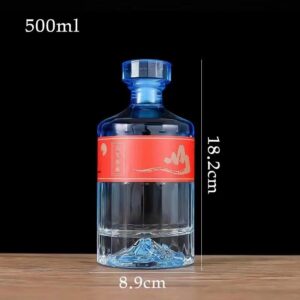
Elegant glass stoppers provide a sophisticated seal for high end decanters and drink bottles. The precision fit between the ground glass stopper and bottle neck creates an excellent barrier without requiring additional gaskets. Glass is chemically non-reactive to preserve purity and aroma. The clarity provides instant visibility of contents as well. Care is required when handling to avoid fracturing the fragile glass.
Aluminium
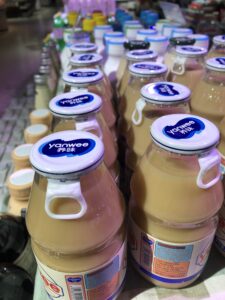
Aluminum is widely used for bottle closures like spirits caps, wine capsules and crown seals due to its corrosion resistance, ductility for crimping and impermeability. Aluminum is highly malleable which allows tight sealing through compression or crimping force. It is also chemically non-reactive and protects contents from oxygen and light. Light weight aluminum closures avoid placing excess load on fragile glass necks.
Natural cork
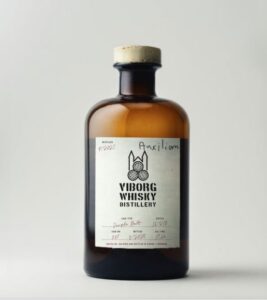
Natural cork is a classic bottle closure material valued for its appearance, sustainability and oxygen diffusion properties that allow wine to age slowly. Cork???s elasticity enables it to compress and form gas-tight seals. The variability in natural corks means oxygen ingress ranges unpredictably from bottle to bottle. Synthetic cork alternatives provide more consistent oxygen exposure.
Plastic (ABS)
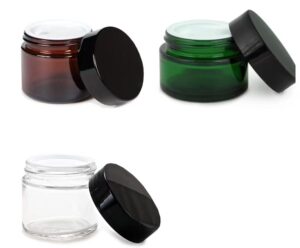
ABS plastic is commonly used for screw caps and other closures. ABS is durable, lightweight, temperature resistant and chemically inert. Various food-grade plastic polymers offer high strength and flexibility for excellent bottle seals. Clear versions maintain bottle visibility while colored variants protect light-sensitive contents. Compared to metal and glass, plastics substantially reduce the weight load on glass bottle necks and damage risks if dropped.
Stainless steel plus Ceramics
Stainless steel lends exceptional mechanical strength, corrosion resistance and durability to applications like swing top stopper rings and liquor bottle caps. The stainless steel retains integrity for repeated opening while providing robust structure to hold the sealing mechanism in place. Inert ceramics make durable, non-reactive sealing surfaces for swing tops and glass stoppers. Steel and ceramic stand up to heavy usage for the life of the bottle.
Bamboo and Wooden
Sustainable bamboo and wood closures provide eco-friendly, attractive sealing options for wines, vinegars, and artisanal beverages. Bamboo and wood retain the classic style of traditional wine corks while offering more design freedom and consistency.
Renewable cork-wood blends combine sustainability with reliable performance. Such closures enable branding through customizable shapes, textures and burned logo marking for a bespoke bottle presentation.
Elements Need to Consider When Choosing Closures
Sealing performance represents just one aspect of choosing an optimal closure. In this section, we will highlight other critical considerations from user experience to manufacturing to product perception that factor into the decision process.
Functional use
The closure must protect the contents from leakage, contamination and damage throughout filling, sealing, handling distribution cycles and shelf life. It should form a consistent seal across bottle batches and remain functional despite small dimensional variations in bottle necks. The closure needs to reliably isolate the contents and preserve them in good condition over required storage conditions and duration.
Aesthetics reason
Beyond basic function, the bottle closure heavily influences the style, branding and customer perception of packaged products, particularly for premium segments. An ornate glass stopper, embossed metal cap or sustainably sourced natural cork imbues sophistication that boosts value. The closure should complement bottle style for visual appeal whether on the shelf or table.
Specific usage
Certain products require closures that seal partially or permeably to control exposure. Wine corks allow gradual oxygen ingress for proper aging. Beverage flip tops facilitate frequent opening and resealing while preventing contamination and carbonation loss. Spirits employ tamper-proof, non-refillable caps to discourage dilution. Usage conditions factor into selecting the optimal closure functionality.
Design
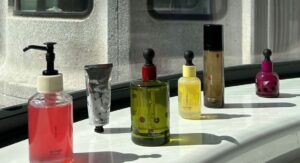
Closure selection impacts many facets of bottle design, storage and handling. Size, shape, material affect distribution loads from weight and fragility. Decorative closures enhance aesthetics but may sacrifice stackability. Reusable versions (swing tops) require durable construction and reliable resealing while non-refillable caps offer single use security. There are always design trade-offs to balance when selecting an optimal closure.
Sustainability
Environmental factors apply to sourcing raw materials as well as reusability and end-of-life considerations. Sustainable aspects like renewable cork, durable reusable metal, and recyclable plastic influence eco-friendly perceptions that attract environmentally conscious consumers. Closures made from recycled materials or designed for re-use provide obvious sustainability advantages.
Conclusion
The choice of bottle and jar closure entails balancing many interrelated factors including sealing reliability, shelf life, reusability, appearance, cost and sustainability. Metal, plastic, natural cork and glass closures each have advantages for different applications. Premium bottles favor glass stoppers and natural cork for elegance while high volume foods use convenient screw caps.
The closure protects contents and becomes part of the consumer experience, so careful selection ensures both product integrity and positive perceptions. With such a variety of sealing options, glass package designers can match the optimal closure to the distinctive requirements of virtually any product.

